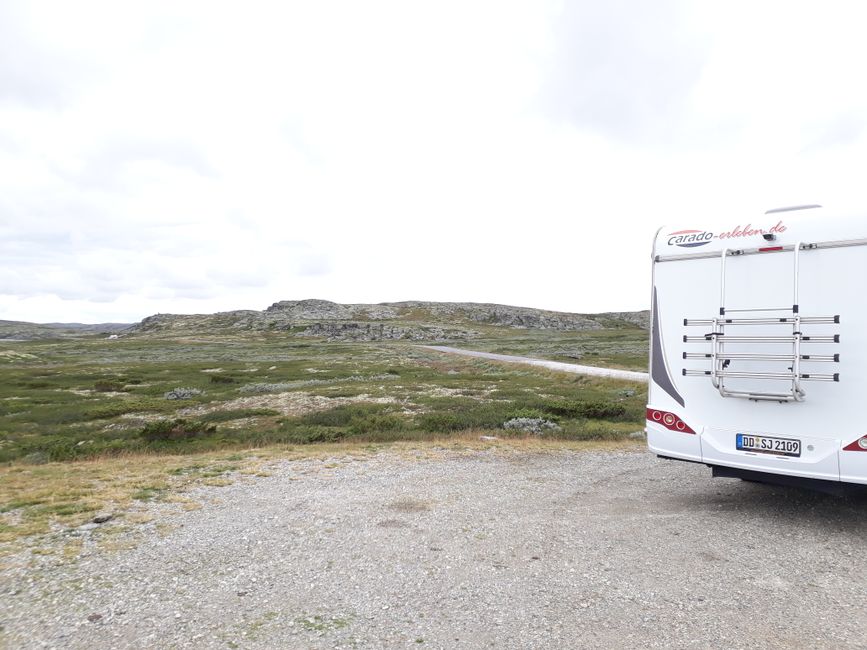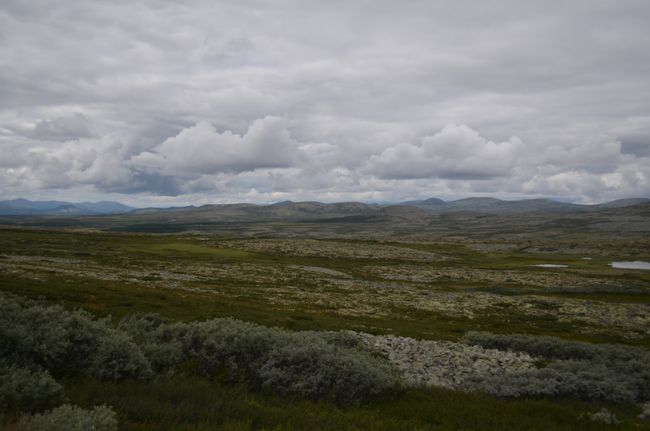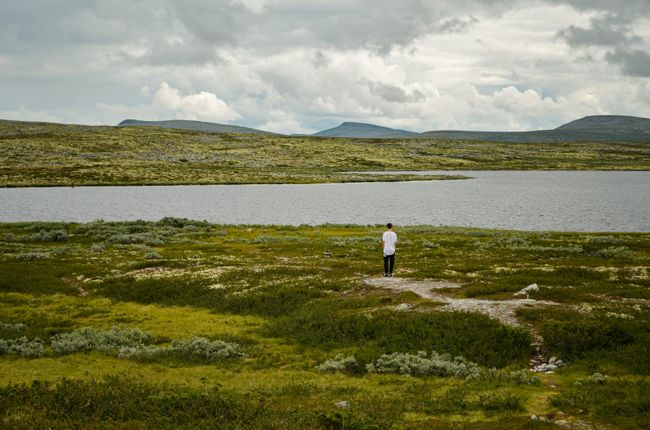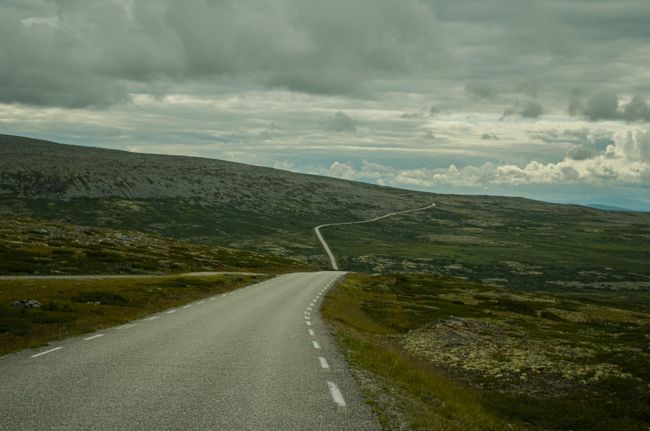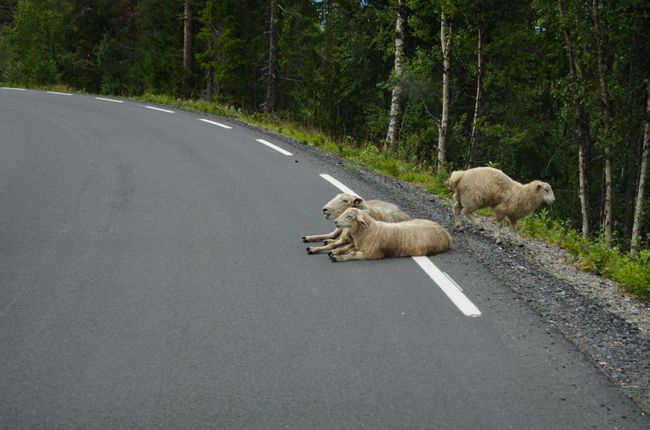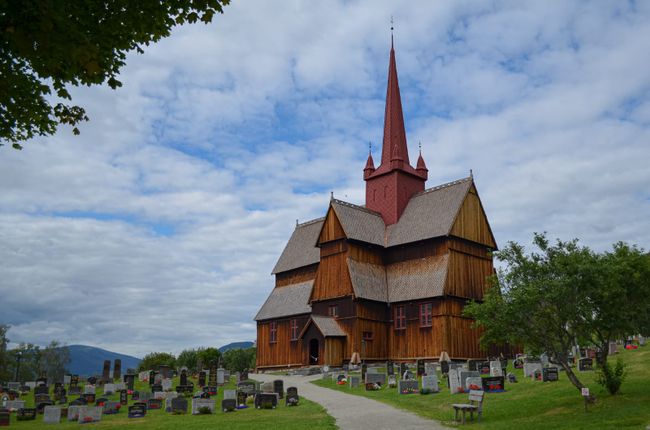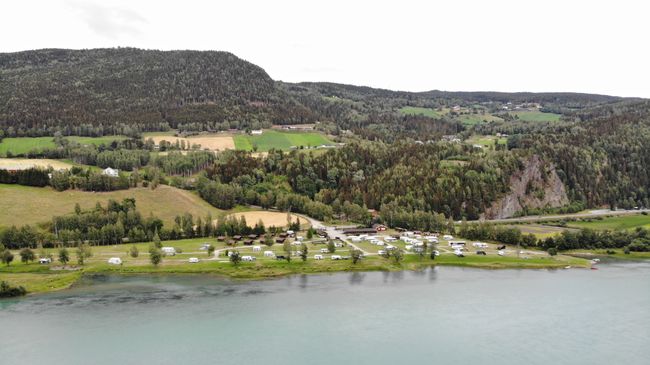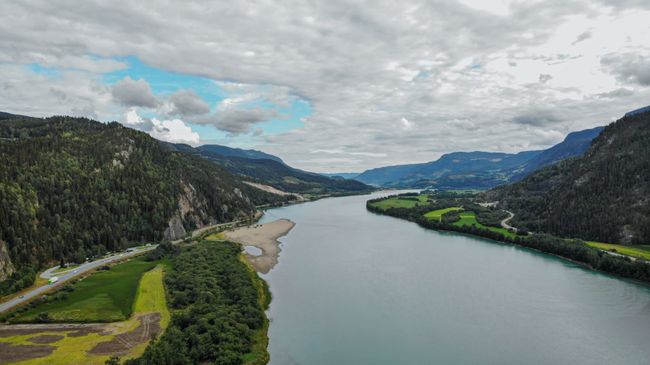Welcome to Norway
Wotae: 09.08.2019
Wɔ Nudɔdɔ na Nyadzɔdzɔgbalẽ
The morning went quite unspectacular, having breakfast, packing, filling the fresh water tank, checking out. But I was finally able to clarify the remaining question. I asked the nice man at the reception why the Swedish wooden houses are always red. Here's what he said (without guarantee of truthfulness and correctness - the conversation was conducted in English): In the town of Falun there is a copper mine. In addition, the Swedes have the urge to pickle fish in wooden crates (or barrels) in brine. At some point, someone mixed the brine with the waste products of copper extraction and this special red color was created. From then on, the wooden houses in the Falun region were painted with this color. This then spread further and today you can see the typical red Swedish house beyond this region. The nice man also revealed to me that if someone builds a wooden house today, they can determine the facade color themselves. As long as it's red!
Great story, and now you know.
Then we spent our last Swedish crowns and set off on the next big journey to the west.
Around noon we arrived at the Swedish-Norwegian border. Before that, we made a short stop to install the GoPro so that we can film this memorable moment of crossing the border. And what happened? Totally disappointing. First came the inconspicuous looking sign 'Norwegian border straight ahead' and swoosh..... you're over. No big fuss, no border control, nothing. Only the roads were no longer covered with red asphalt and the license plates of the cars looked somehow different.
But we are now in Norway and the next big adventure can begin.
At first, the landscape didn't change so greatly, still forests and lots of water, whether lakes, ponds or rivers. But you still can't get enough of it. But the houses looked different now. While the Swedes live in small red houses, the Norwegians have much larger, almost villas, with beautiful large deeds. Most of them are also only built on one floor with an attic. If you passed by a small house without a veranda, you could still see 2-3 more cottages in the backyard. That's what Mom's daughter likes.
After a while, the GPS told us to "turn left here" and from then on our mouths remained wide open in astonishment. The road led us higher and higher, sometimes it got quite narrow and you had to briefly pull over to the right for oncoming traffic. The forest world became increasingly sparse and eventually we reached the tree line. An unimaginable view of the vastness of nothingness opened up to us. Mountains on the horizon, no town, no house far and wide and in 1200m there was a crystal clear lake. Of course, we had to stop for a photo session! We could enjoy this fantastic view almost the whole way to our new domicile. Unanimous opinion in the motorhome: the landscape is even more awesome than in Sweden.
Just before the end of our tour, there was still a highlight to admire: The stave church in Ringebu. This is one of the largest of the 28 remaining Norwegian stave churches and was built in 1220. Today, of course, it looks completely different, with multiple changes in construction both inside and out, but the core, the nave, has been preserved. Everything is joined by wooden dowels and built on sills, not a single nail was used back then. Quite interesting and impressive.
After we had expanded our cultural knowledge, we drove the last few meters to Elstad Camping in Ringebu, pure enthusiasm on our faces! This beautiful spot is located right on the Gudbrandsdal River, with a view from the motorhome of a gigantic rock wall, covered with double pine trees and the river shimmers in a magnificent turquoise. It's a great place to be. Norway, we have arrived!
4BolisOnTour
Wɔ Nudɔdɔ na Nyadzɔdzɔgbalẽ
Ŋuɖoɖo

